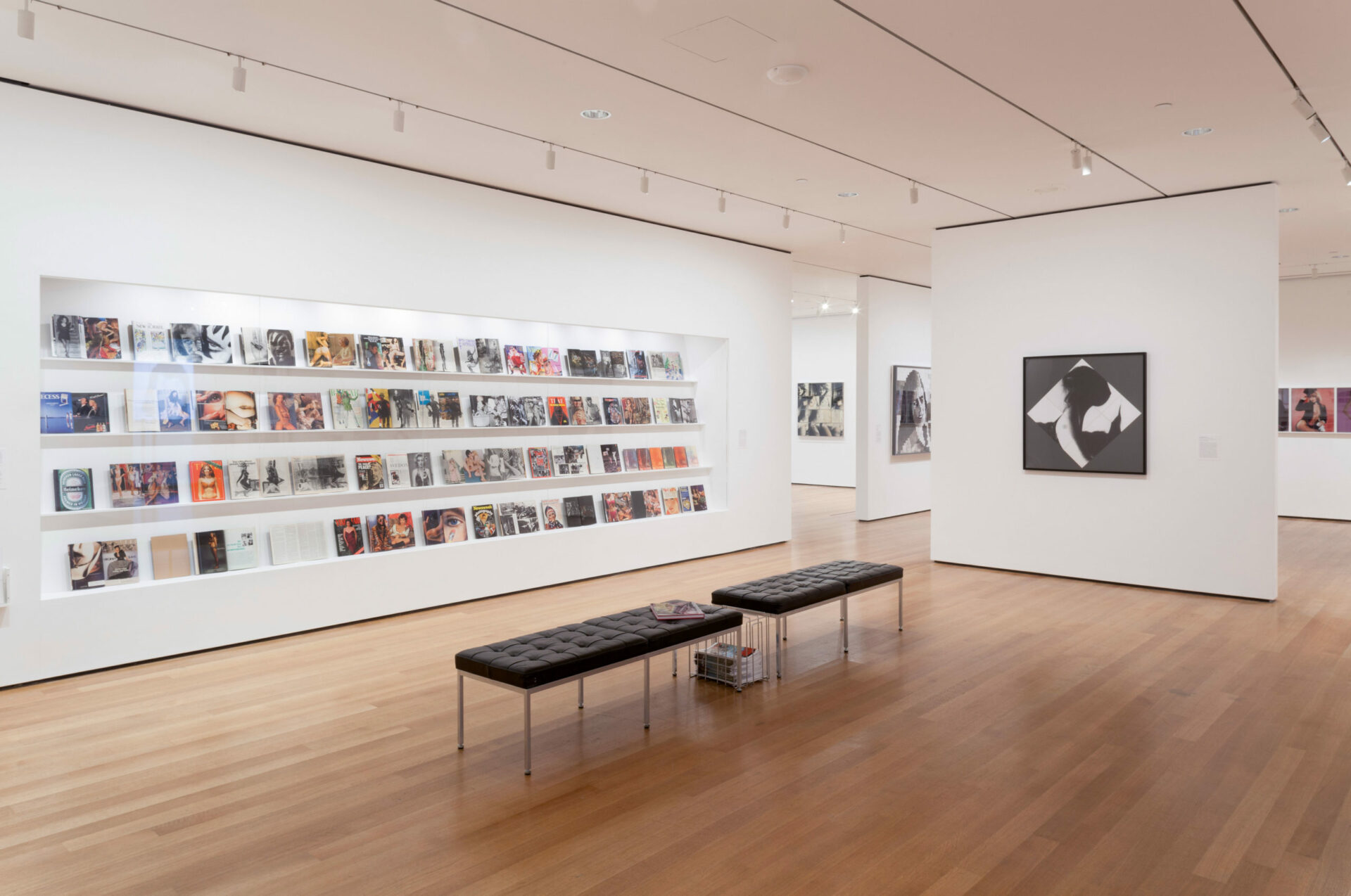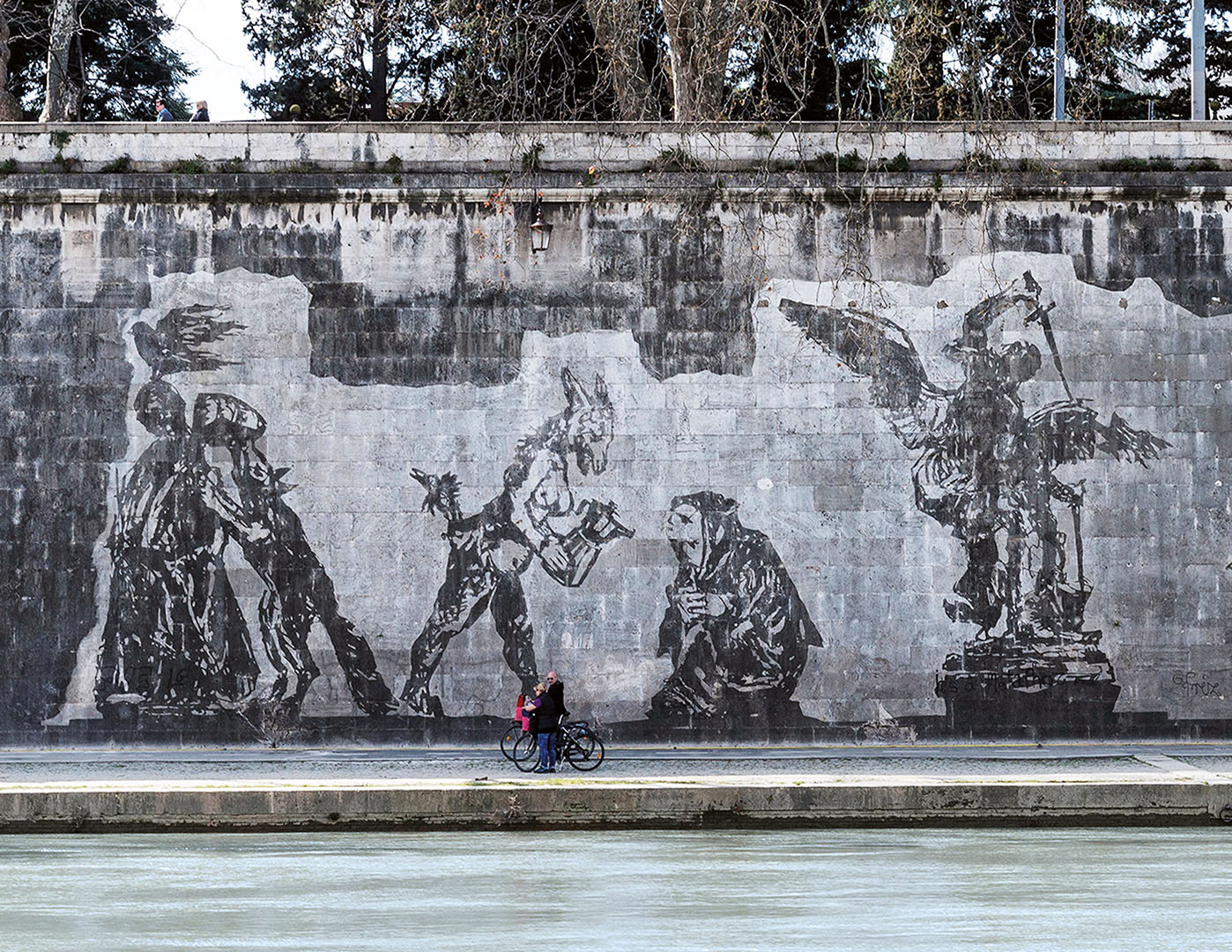
photo : Jonathan Muzikar, © The Museum of Modern Art
[En anglais]
Object Matter is the first retrospective of conceptual photographer Robert Heinecken’s work since his death in 2006. It is a small show but rife with ideas and loaded imagery. Heinecken was a Los Angeles-based photographer who seldom used a camera, calling himself a “paraphotographer” in that his work stood outside the traditional considerations of the medium. Primarily appropriating images found in magazines, pornography, and television, he asserted the photograph as object unto itself while recontextualizing it, expanding the parameters of its accepted form and usage. His inquiry inhabited many disciplines including collage, installation, sculpture, and printmaking, all of which are represented here.
A highlight of the show is the Are You Rea series (1964 – 68), black and white “negative” photograms made from combining the front and back images of various magazines (a theme revisited in his successful Recto/Verso series of the late 1980s). These ghostly combinations present convincing case studies on the intersection of chance, media, consumerism and the constructed visual experience of advertising, while prefiguring the overlapping, multiple realities of our desktop digital world. Highlighting Heinecken’s interest in chance arrangements is Child Guidance Toys (1965), wherein a found pairing of adverts highlights an image of a child pointing a rifle directly at a figurine of John F. Kennedy. An installation of over one hundred examples from both the Periodical and Revised Magazine series underscores the degree to which magazines were of abiding interest to Heinecken throughout his career. These ageing, patinated works consist of magazines that were manipulated or altered via overprinting or collage, foregrounding issues of authorship, ubiquity versus uniqueness, and the glut of media-sourced imagery.
Most of these works contain women as subject matter and though they came into being during the cultural rise of feminism, one of the show’s problems is that, based on this work alone, you would never know it. However varied Heinecken’s conceptual strategies and changing material investigations, they are largely exercised through the female form, objectifying it in the process. His repeated use of pornographic imagery, though tame, seems to infuse his projects with a sense of disregard for the implications of the imagery they employ. A few failures along this line would include Lingerie for a Feminist Suntan #3 & #4 (1973) containing photo emulsion paper bras on wire hangers with female nude torsos sporting “photographic” tan-lines. Both constructions seem flippantly butch and sophomoric. Nearby, an installation of a domestic interior, TV / Time Environment (1970/2014), includes a television that plays programming through a female nude image, raising the inevitable questions of consumption, fetishism, and commodification but also the question “Is this critiquing institutional sexism or contributing to it?” The exhibition title playfully suggests that to Heinecken, his objects did matter while unfortunately his subjects may not have.




